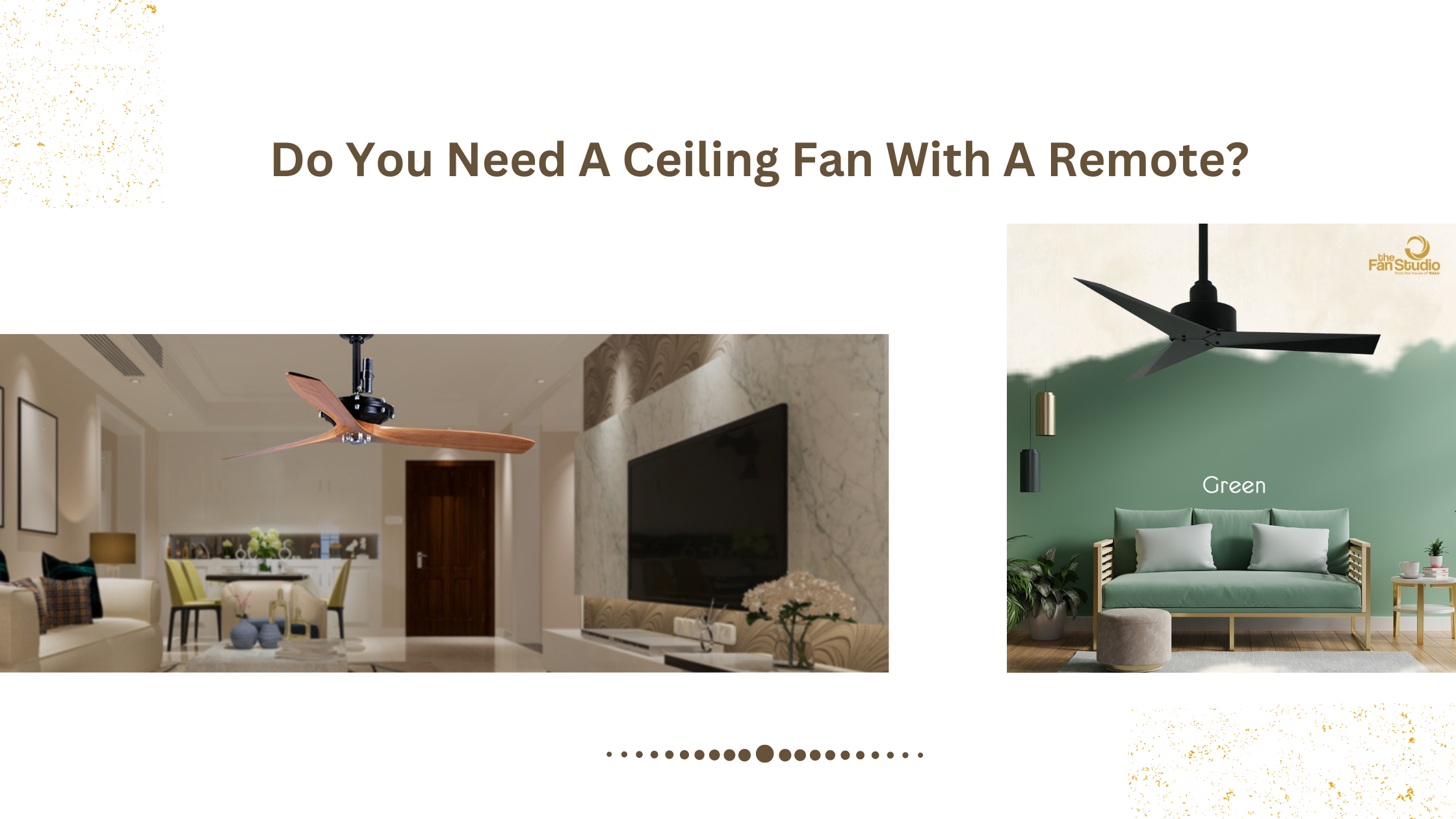
The type of control used by ceiling fans is one of the most noticeable variances. Choosing the type of control you want isn’t always easy, and there are a few factors to consider before making your decision.
Ceiling fans have three types of controls:
- Remote controls
- Wall Control
- Pull cord: The initial method was pulling a cable from the motor. It switches the fan on and off and occasionally varies the speed. This setting is still accessible to some older-style fans.
When you buy a fan, it will usually come with only one of these control techniques, although many will allow you to use another method for an additional fee. Not all fans have access to remote control, but the majority do. It will be the standard way of control for some. Others will use a pull cord or wall control and include a remote as an option.
Ceiling fans with remotes have many benefits, but they are not for everyone. They are sometimes necessary, sometimes more convenient, and sometimes you might be better off without them!
When do you require a Ceiling Fan with remote control?
In some circumstances, installing a fan will need the use of a remote control. It is possible that you will not have access to put wiring through the ceiling and down the wall to install a wall control. This is frequent in flats with another story above them, where the wiring in the ceiling is inaccessible. However, there is a light in the room, so you may replace it with a fan and light and operate both with a remote.
If the remote control is the only choice for the fan model you select, you will also require one. This is especially true with DC fans, which are currently available solely with remote controllers. So, while selecting a ceiling fan, you may resolve the issue of whether or not to use a remote.
When the remote control is optional?
- If access to the wiring is not an issue, a remote may be more convenient:
- In a bedroom, a remote allows you to turn the fan on and off from the comfort of your bed.
- If you have more than one fan: In a large location (such as a living room or restaurant) where you want all of your fans to be on at the same time (ie they all turn on together). Install radio frequency remotes and configure them all to the same frequency in this situation. The single remote control handset will turn them all on and off at the same rate.
When you’d be better off without a remote!
In the following situations, you may be better off without a ceiling fan remote control:
- If you suspect the remote will be misplaced. This might be an issue for people who have young children or pets in the house. You can avoid this by selecting a model that includes a remote cradle.
- If you don’t want to replace your batteries. If you don’t want to bother with flat remote batteries, wall control or pull cord is a preferable solution.
- Finally, remotes will wear out and need to be replaced over time. Pull cords and wall controls are more durable (until damaged by external sources), therefore they require less maintenance.
- If you are noise sensitive. Most remote controllers emit a beep sound to signal that the handset and receiver are correctly interacting. This also occurs when the isolation switch is switched on, indicating that power is being supplied to the receiver. Some remotes allow you to turn this off, so if this is something you’re concerned about, please contact us for advice.
Remote Facts:
Remote functionality – All fan remotes have different fan speeds (usually three, but some have more) and an on/off button for the light if you have a fan with light. Some remote controls additionally have light dimmers and fan timers. Your remote possibilities will be determined by the fan you select; if you are looking for anything specific, please contact our sales staff and they will provide you with some options. Please contact our staff for further information if your ceiling fan has a reverse direction function on the remote.
Brackets – Most remotes come with a wall bracket that allows you to hang them on the wall, making them less likely to be lost!
Fan and light controlled separately – Using a remote does not imply that you will turn on both your fan and fan light simultaneously! They can still be controlled independently. In fact, depending on your circumstances, you may be able to convince your electrician to keep the light on a wall switch while merely wiring the remote to the fan.
Conclusion:
So it’s really up to you if you decide ‘to remove or not to remote’. It depends on your space, your preferences, and your choice!

